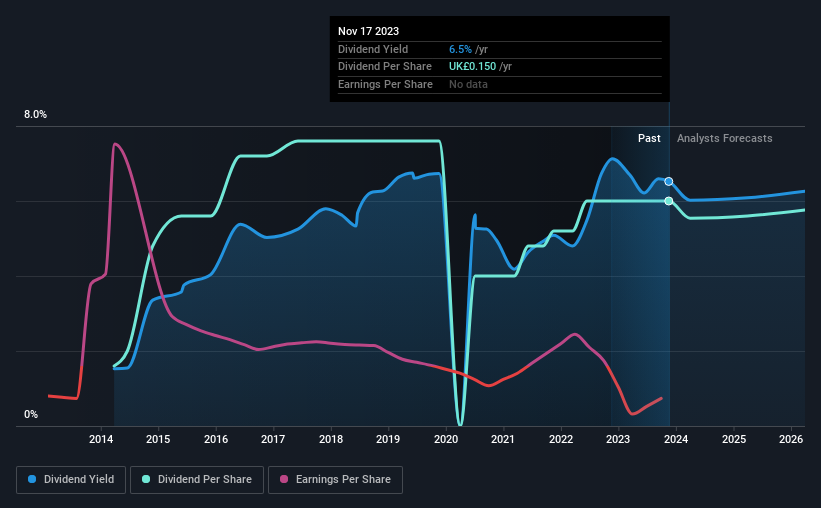Why It Might Not Make Sense To Buy Palace Capital Plc (LON:PCA) For Its Upcoming Dividend
It looks like Palace Capital Plc (LON:PCA) is about to go ex-dividend in the next four days. The ex-dividend date is one business day before the record date, which is the cut-off date for shareholders to be present on the company's books to be eligible for a dividend payment. The ex-dividend date is important as the process of settlement involves two full business days. So if you miss that date, you would not show up on the company's books on the record date. This means that investors who purchase Palace Capital's shares on or after the 23rd of November will not receive the dividend, which will be paid on the 29th of December.
The company's next dividend payment will be UK£0.037 per share, on the back of last year when the company paid a total of UK£0.15 to shareholders. Last year's total dividend payments show that Palace Capital has a trailing yield of 6.5% on the current share price of £2.3. Dividends are a major contributor to investment returns for long term holders, but only if the dividend continues to be paid. We need to see whether the dividend is covered by earnings and if it's growing.
See our latest analysis for Palace Capital
Dividends are usually paid out of company profits, so if a company pays out more than it earned then its dividend is usually at greater risk of being cut. Palace Capital reported a loss after tax last year, which means it's paying a dividend despite being unprofitable. While this might be a one-off event, this is unlikely to be sustainable in the long term. Considering the lack of profitability, we also need to check if the company generated enough cash flow to cover the dividend payment. If cash earnings don't cover the dividend, the company would have to pay dividends out of cash in the bank, or by borrowing money, neither of which is long-term sustainable. Fortunately, it paid out only 47% of its free cash flow in the past year.
Click here to see how much of its profit Palace Capital paid out over the last 12 months.
Have Earnings And Dividends Been Growing?
Companies with falling earnings are riskier for dividend shareholders. If business enters a downturn and the dividend is cut, the company could see its value fall precipitously. Palace Capital was unprofitable last year and, unfortunately, the general trend suggests its earnings have been in decline over the last five years, making us wonder if the dividend is sustainable at all.
Another key way to measure a company's dividend prospects is by measuring its historical rate of dividend growth. Palace Capital has delivered 14% dividend growth per year on average over the past 10 years.
Remember, you can always get a snapshot of Palace Capital's financial health, by checking our visualisation of its financial health, here.
The Bottom Line
From a dividend perspective, should investors buy or avoid Palace Capital? We're a bit uncomfortable with it paying a dividend while being loss-making. However, we note that the dividend was covered by cash flow. It's not an attractive combination from a dividend perspective, and we're inclined to pass on this one for the time being.
With that in mind though, if the poor dividend characteristics of Palace Capital don't faze you, it's worth being mindful of the risks involved with this business. Be aware that Palace Capital is showing 2 warning signs in our investment analysis, and 1 of those doesn't sit too well with us...
Generally, we wouldn't recommend just buying the first dividend stock you see. Here's a curated list of interesting stocks that are strong dividend payers.
Have feedback on this article? Concerned about the content? Get in touch with us directly. Alternatively, email editorial-team (at) simplywallst.com.
This article by Simply Wall St is general in nature. We provide commentary based on historical data and analyst forecasts only using an unbiased methodology and our articles are not intended to be financial advice. It does not constitute a recommendation to buy or sell any stock, and does not take account of your objectives, or your financial situation. We aim to bring you long-term focused analysis driven by fundamental data. Note that our analysis may not factor in the latest price-sensitive company announcements or qualitative material. Simply Wall St has no position in any stocks mentioned.

 Yahoo Finance
Yahoo Finance 
